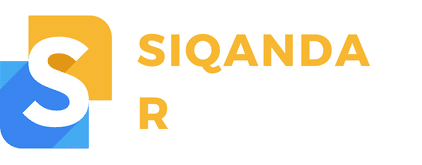What Role Are Smart Glasses Playing in Augmented Workforce Training?

The role of technology in reshaping the way we live and work is indisputable. Today, we stand at the forefront of a new technological revolution, where augmented reality (AR) is transforming the way workers are trained and perform tasks. A key player in this technology-driven transformation is the use of smart glasses in workforce training. In this piece, we will delve into the role that these intelligent wearable devices are playing in augmenting workforce training, with a focus on the reality-based support they offer, the way they leverage virtual and visual elements to enhance learning, and their potential for remote assistance.
Augmented Reality-Based Support Through Smart Glasses
The core feature of smart glasses that makes them a game changer in workforce training is their ability to provide augmented reality-based support. With smart glasses, a user can view real-world objects through the lenses, overlaid with digital information. This virtual overlay provides workers with additional context, data, or guidance as they perform tasks, making their training more effective.
A lire aussi : How Is Nanotechnology Revolutionizing Water Filtration and Desalination?
This combination of real and virtual elements enables the user to interact with digital content in a physical context. For instance, in a manufacturing setting, workers wearing smart glasses can be guided through complex assembly procedures. The glasses display step-by-step instructions directly in the worker’s field of view, allowing them to follow along without having to refer to a separate manual or tutorial. This hands-free, in-situ learning not only accelerates the training process but also reduces chances of error.
Visual Learning Enhancement With Smart Glasses
Smart glasses leverage the power of visual learning, which is known to be one of the most effective methods of information retention. With smart glasses, trainees can get a visual representation of what they’re learning, which can significantly enhance their understanding.
A voir aussi : Can AI Optimize Energy Usage in Data Centers to Reduce Carbon Footprint?
For instance, a trainee learning a new piece of machinery can not only read or hear about its functions but can also see them in action. The graphical overlay provided by the smart glasses can highlight different parts of the machine, display their names and functions, and even animate the machinery’s operations. This visual assistance can transform abstract concepts into concrete realities, making learning more engaging and effective.
Moreover, these glasses can also record what the user is seeing, allowing trainers to review and provide feedback on the trainee’s performance. This immediate feedback loop can significantly shorten the learning curve and improve the quality of training.
Smart Glasses Facilitate Remote Training and Assistance
In the era of globalization and remote work, smart glasses have emerged as a powerful tool that allows remote training and assistance. This is particularly relevant in field-based tasks where in-person training can be logistically challenging or costly.
For instance, a field worker can share their view with a remote expert, who can then provide real-time guidance using the visual feed from the smart glasses. This remote assistance can reduce downtime, as workers can receive immediate help without having to wait for an expert to arrive on site.
Furthermore, smart glasses can also record and share the user’s visual perspective during a task, allowing for remote, asynchronous training. This allows trainees to learn at their own pace and revisit training materials whenever necessary, making smart glasses an effective tool for individualized learning.
The Future of Workforce Training With Smart Glasses
While smart glasses are already transforming workforce training, their potential is far from fully realized. As technology continues to evolve, we can anticipate further enhancements in the integration of augmented reality and wearable technology.
In the future, we might see smart glasses providing more immersive and interactive AR experiences, such as holographic simulations of real-world tasks or environments. This would allow workers to practice and hone their skills in a safe and controlled virtual setting before applying them in the real world.
Also, with the rise of artificial intelligence and machine learning, smart glasses could provide personalized training and support tailored to the individual’s skills, learning pace, and preferences. They could even predict potential challenges or errors before they occur, offering proactive guidance to the user.
In summary, smart glasses are playing a pivotal role in advancing workforce training, offering reality-based support, enhancing visual learning, and facilitating remote training and assistance. As technology continues to evolve, these glasses will undoubtedly play an even greater role in shaping the future of workforce training, making it more effective, efficient, and engaging.
Gesture Interaction and Corporate Training in Augmented Reality
The potential of smart glasses in reshaping corporate training scenarios is tremendous, especially when combined with the power of gesture interaction. This feature allows users to interact intuitively with virtual objects overlaid in their real environment, augmenting their training experience.
In a corporate setting, smart glasses can transform the way employees are trained. For example, in sectors that require precise technical skills, such as engineering or healthcare, trainees wearing smart glasses can practice skills in a virtual environment. They can manipulate virtual objects through gesture interaction, providing a level of tactile feedback that textbooks or video tutorials cannot replicate.
Gesture interaction also significantly improves the efficiency and effectiveness of training. For example, medical training often involves complex procedures that require precision. With smart glasses, medical students can practice surgical procedures virtually, manipulating virtual objects in real time. This not only provides a safe and cost-effective training environment but also allows for immediate feedback and correction.
It’s also worth noting that gesture interaction can greatly enhance the inclusiveness of training programs. Some people might struggle with traditional training methods due to physical or cognitive challenges. However, smart glasses with gesture interaction can be adapted to meet individual needs, providing a more personalized and inclusive training experience.
Field Service Support and Remote Assistance in Real Time
Smart glasses are revolutionizing field service industries, especially those that require skilled workers to perform tasks in remote or difficult-to-reach locations. The integration of augmented reality technology in smart glasses offers field service workers real-time remote assistance, significantly improving efficiency and productivity.
In a field service scenario, a technician wearing smart glasses can share their field view with experts located elsewhere. The experts can see exactly what the technician sees and guide them through complex tasks. This real-time interaction between the technician and expert not only minimizes errors but also drastically reduces downtime, as the technician doesn’t need to wait for an expert to arrive at the site.
In addition, smart glasses can overlay digital information onto the technician’s view, providing step-by-step guidance. For instance, if a technician is repairing a complex piece of machinery, the glasses could display a digital overlay of the machinery, highlighting the target object and detailing the necessary repair steps.
Looking ahead, it’s plausible to envision a future where smart glasses are widely used for field service support. As augmented reality technology continues to advance, the level of remote support could become even more sophisticated, with experts able to manipulate virtual objects in the technician’s field view in real time. Even training for field service roles could be revolutionized, with trainees practicing tasks in virtual environments before heading out into the field.
Conclusion: Transforming Workforce Training with Augmented Reality
In conclusion, smart glasses are playing an extensive role in reshaping workforce training. They provide a reality-based training experience that is immersive, interactive, and personalized. From enhanced visual learning and gesture interaction to real-time remote assistance and field service support, smart glasses are transforming the way we train our workforce.
As the technology continues to evolve, the power of augmented reality in workforce training will undoubtedly continue to grow. It is enticing to imagine a future where virtual and real worlds seamlessly blend, offering an unparalleled training experience. Whether it’s honing skills in virtual environments, receiving real-time remote support, or benefiting from personalized training programs, the use of smart glasses promises an exciting future for workforce training. The next generation of workers will be more equipped, efficient, and prepared to tackle the challenges of the future.
